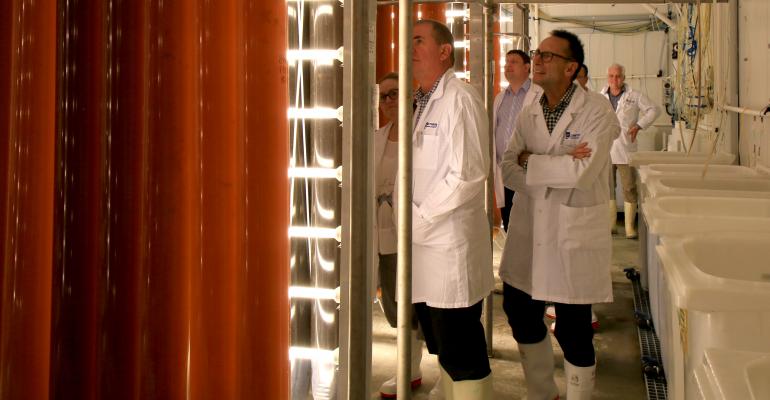
Dr Chris Cornelisen
Aquaculture gets teched up
‘I can’t talk right now, my mussels aren’t feeding' — the aquaculture farmer ends the call and scrolls through his phone to his mussel mood dashboard, to find out what’s upsetting the crop.
“Maybe it’s about the water temperature, or there’s a harmful algal bloom underway, or maybe there’s too much sediment in the water,” says Chris Cornelisen, SfTI Spearhead project leader and coastal science lead at the Cawthron Institute in Nelson.
He’s talking about a future world where kiwi aquaculture farmers will be able to rely on multiple, cost-effective sensors to observe and interpret changes in their farm environments without having to get in a boat and head out onto the water.
Chris says the SfTI-funded project brings together researchers from Cawthron, the Universities of Auckland, Canterbury and Victoria as well as others to develop technologies that together will deliver practical cost-savings and other efficiencies for aquaculture farmers and assist in enabling offshore farming in future.
A sensor that indicates ‘mussel mood’ is an example. Cawthron researcher, Heni Unwin is using measurements of magnetism to remotely gauge how often mussels are opening to feed and to what degree. Combining this with farmers’ knowledge about how shellfish behave in particular circumstances can function as an indicator of shellfish health.
“For example, new research suggests they open and shut rapidly when there’s a harmful algal bloom in the water, and they stay shut when they are stressed,” Heni says.
The data could be returned to the farmer in a format that can be interpreted at a glance, and on the go.
“It could be mussel emojis. Whatever works best for farmers.”
The individual wired-up mussels could be distributed at key points around the farms like sentinels, ready to dispatch information about how the rest of the crop is doing. Other sensors using cameras and even lasers will tell farmers about their structures and surrounding water conditions, such as the amount of plankton (mussel food) in the water.

Getting the data from the sensors back to the farmer on land is problem number two. Chris says usual communications methods, like wireless or satellites, can be patchy and expensive. Using farther reaching and cheap communications built around the Internet of Things (IoT) is part of the answer. The idea here is that inexpensive IoT sensors can be mass deployed across many farms and networked with each other to provide real-time snapshots of important parameters such as water temperature across entire bays or sounds. Technologies for data ‘hopping’ from sensor to sensor are also being developed as a form of ‘wireless’ for underwater. Such technologies will help pave the way for future technologies such as on-farm robotics and automation.
Once the communications nut has been cracked, the project will be able to get full use out of the technical advancements the team has been working on. Chris says that while a lot of the sensor tech already exists, getting it to work in an ocean is another matter.
As Paul Barter, one of Cawthron’s tech developers says:
“Salty, sometimes high wave, high energy environments don’t go well with tech. The ocean likes to eat things, and traditional sensors can be in the range of $10,000 each.”
The team is now testing small, inexpensive, and easily deployable water temperature sensors that can be positioned at various depths and on many farms – building a complete understanding of changing water temperatures in any given area.
“We’d be able to crunch it all and build a 3D picture of where warmer water is moving and farmers can use the data to develop relationships between temperature and what they observe in their crops. We know that mussels can lose a lot of weight after they’ve spawned and changes in water temperature can trigger spawning. Farmers could be alerted when temperatures were rising or falling around their farms and could then deploy their harvesters in areas where crops are likely to be in top condition.
Members of the team based at Auckland University are also developing sensors that use laser spectroscopy capable of measuring the amount of ‘mussel food’ in the water or concentrations of chemicals such as toxins from harmful algal blooms.
Chris says that while each part of the science is fascinating, it’s only useful once drawn together as a whole for the benefit of aquaculture famers.
“The farmers are very innovative, and they’re interested in what we can provide, but it’s got to be practical and cost effective to be useful, and that’s what we’re focusing on. The combination of emerging technologies and kiwi know-how will create an exciting future for ocean farming.”
SfTI is funding the Precision Farming for Aquaculture Spearhead for up to $1M per year for a total of 5 years.


Top image: SfTI board members and members of the MBIE National Science Challenges team examine the algae photobioreactors at the Cawthron Aquaculture Park and research facility.